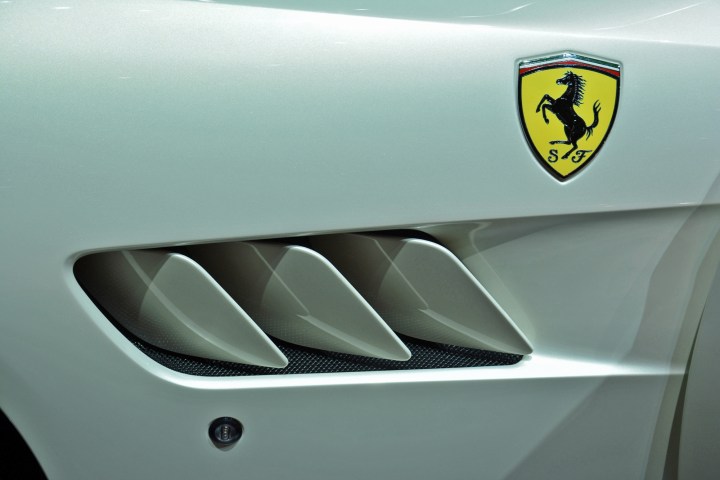
Ferrari is “dead serious” about launching an SUV, Marchionne told Bloomberg at the New York Stock Exchange. A final decision on production will be made within the next 30 months. Production of what Marchionne referred to as an “FUV” will be limited in order to preserve exclusivity. Given the current popularity of utility vehicles, Ferrari should have no problem selling them.
Marchionne’s latest comments double down on remarks made to industry trade journal Automotive News in August. At the time, Marchionne said a Ferrari SUV would “probably” happen, claiming “that space is too big and too inviting, and we have a lot of our customers who will be more than willing to drive a Ferrari-branded vehicle that has that king of utilitarian objective.” He stopped short of providing insight into what the model will look like.
The model is called F16X internally, according to British magazine Car. Fear not; the company’s nameplates have gotten weird in recent times, but the code name won’t make the jump from development to production. The all-terrain model will debut as part of a two-pronged approach to replacing the GTC4Lusso, which is currently the company’s only four-seater model.
Sources familiar with the project say Ferrari isn’t developing a tall, boxy model in the vein of the emblematic Mercedes-Benz G-Class or Land Rover’s Range Rover. Instead, it will fall in line with the company’s instantly recognizable design language by adopting elongated headlights and an egg-crate grille. Beyond the front end, it will receive a fast-sloping roof line reminiscent of a fastback. It will feature four doors and a large hatch out back, another first for the Italian brand. Car reports the model will stand out with suicide rear doors that will provide unobstructed access to the rear seats.
Lightweight materials like aluminum will keep weight in check; it’s a Ferrari, after all, so it needs to offer extremely dynamic handling. Anything less would be sacrilege. In lieu of a V12, the model will launch with a twin-turbocharged V8 engine mounted up front. A gasoline-electric plug-in hybrid drivetrain will join the lineup a little later in the production run. All-wheel drive will come standard regardless of what’s under the long hood.
Previous reports suggested Ferrari’s first SUV could go on sale in 2021. Pricing will reportedly start at about 300,000 euros, which represents about $342,000 at the current conversion rate. That’s a big chunk of cash, but the soft-roader will help Ferrari double its annual sales to 16,000 units, a figure that ought to keep investors happy now that Ferrari is independent and listed on the stock market.
When it lands, the Ferrari SUV will have to fend off competition from the Lamborghini Urus — which will debut in December at the company’s Italian headquarters — and the Aston Martin DBX. Rolls-Royce is well into the development of its own SUV, so the segment is going to get really crowded, really fast.
Updated: Added confirmation of SUV plans from Ferrari’s CEO.
Editors' Recommendations
- Honda’s electric SUV is coming soon. Here’s what we know about the 2024 Prologue
- Adam Driver and Penélope Cruz cast in Ferrari bio movie
- HMD Global shows its serious about U.S. expansion with 5 new Nokia phones
- AMD CEO has good news about the chip shortage, but you still can’t buy a GPU
- Apple’s former design chief Jony Ive to work with Ferrari




